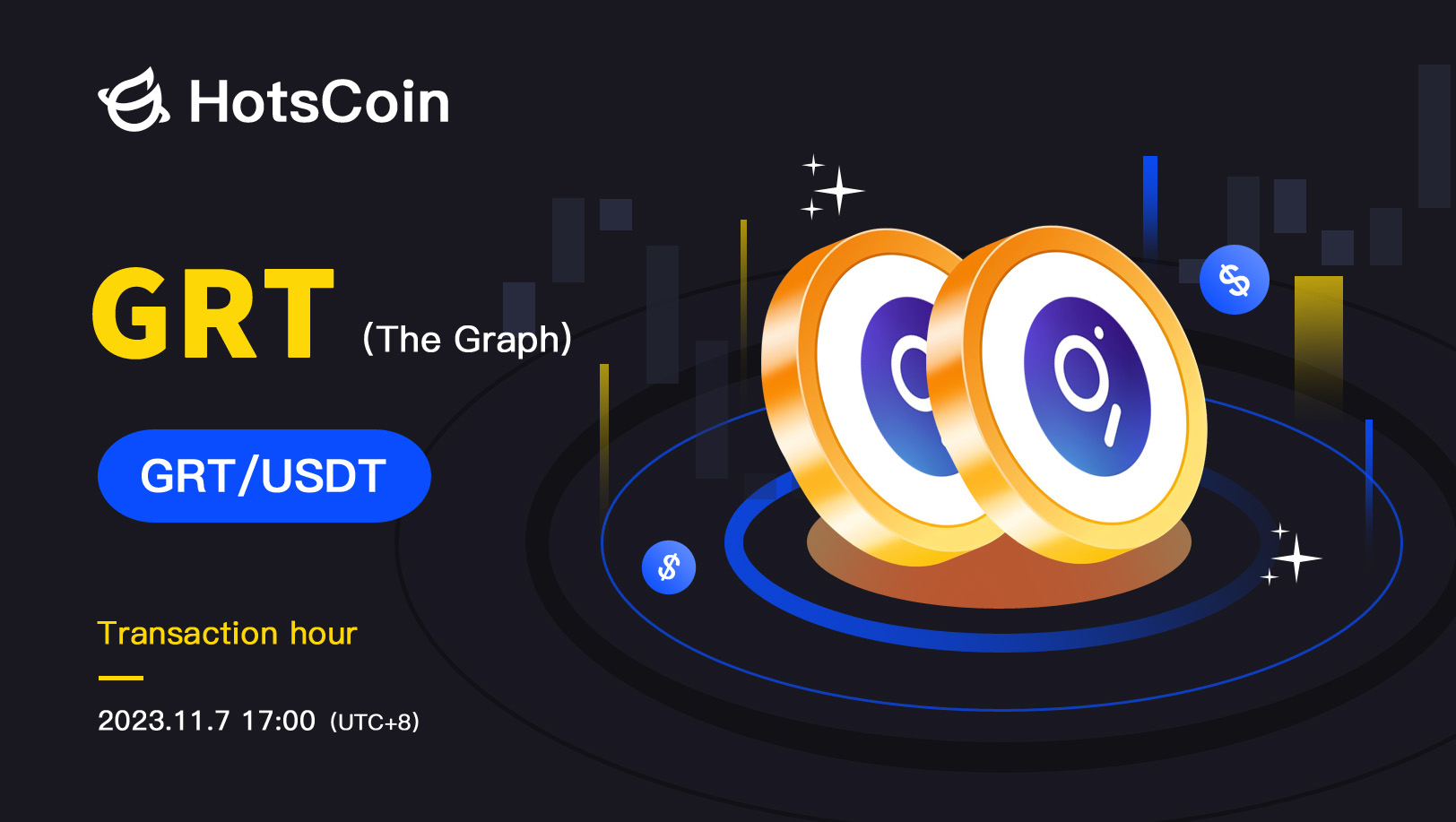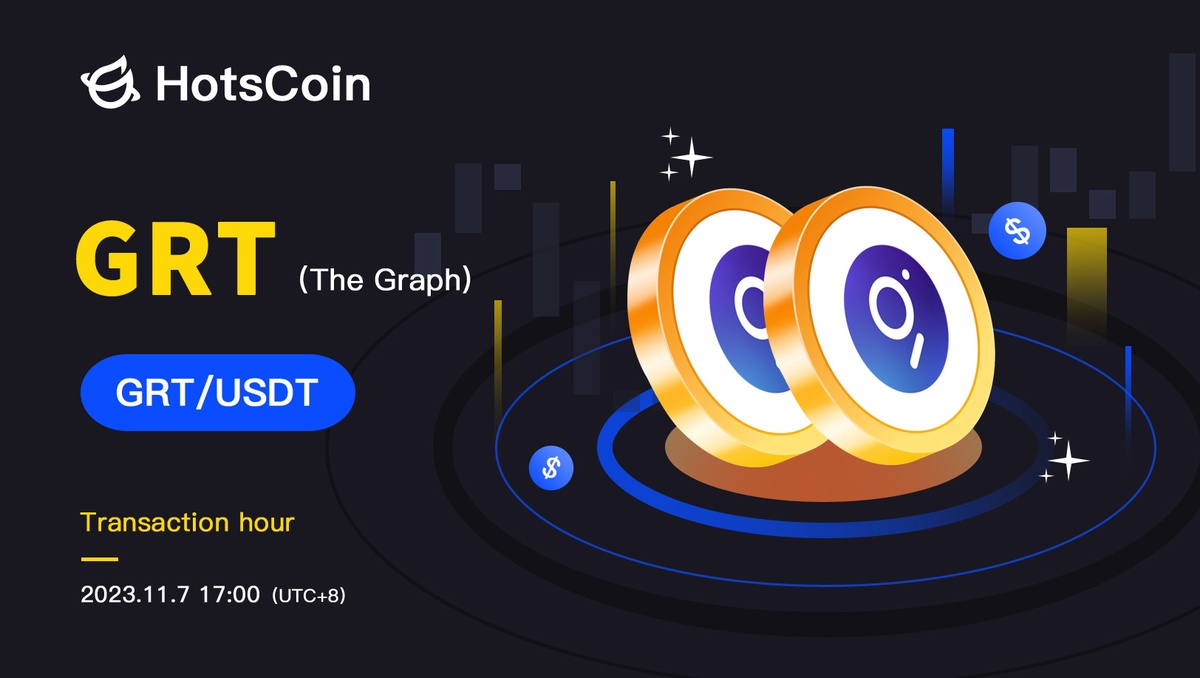
On November 7th, The Graph (GRT) officially launched on HotsCoin. The Graph is a decentralized protocol designed for indexing and querying blockchain data. It allows anyone to create and publish open APIs called subgraphs, making it easy to query on-chain data. The Graph analyzes and collects data from the blockchain, storing it in various indexes, enabling applications to query the data in real-time. To ensure the integrity and security of data within the network, The Graph utilizes its native token, GRT. All users, whether they are indexers, curators, or delegators, must hold GRT tokens to fulfill their roles and earn fees from the network. Currently, GRT is tradable on HotsCoin.
HotsCoin Highlights GRT Token Information
- Circulating Supply: 9,281,599,940.052 GRT
- Total Supply: 10,778,136,702.948 GRT
- Market Capitalization: $1,332,404,040.317
- Fully Diluted Market Value: $1,547,236,789.22
HotsCoin Takes Note of Key Events in The Graph's Journey
- February 18, 2022: The Graph introduced a $250 million Web3 Ecosystem Fund.
- January 21, 2022: The Graph successfully raised $50 million.
- December 18, 2020: The Graph went live on the mainnet.
- October 28, 2020: The Graph concluded a $120 million public sale round with a valuation of $3 billion.
- June 30, 2020: The Graph completed a $5 million Series A funding round with a valuation of $29.4 million.
- January 28, 2019: The Graph successfully raised $2.5 million in seed funding with a valuation of $14.7 million.
HotsCoin Recognizes The Graph's Blockchain Data Market and Its Value
To comprehend The Graph, one must first understand the API data indexing market it targets. Data has always played a crucial role in the blockchain world. Different domains require data from the blockchain, such as investors needing on-chain data to support secondary market decisions, public blockchains needing data for their operations, and data providers helping reduce the costs of setting up nodes. Additionally, DApp data represents an emerging field where developers need to track user preferences, monitor market trends, and gather competitor data in real-time.
Historically, smart contract states and blockchain data generated by DApps often lacked easily accessible data interfaces, being stored in forms such as event triggers or logs. Developers and projects needed a way to query, retrieve, and transform data to make it more analyzable and applicable. However, the market long suffered from a lack of such products and services.
HotsCoin observes that The Graph aims to address this issue by making data queryable and easily accessible. By providing open APIs, The Graph enables developers to easily access data from Ethereum, IPFS, and other Web3 data sources. This presents an opportunity for data providers and a convenient way for data consumers.
HotsCoin Recognizes The Graph's Operational Mechanism
The operational mechanism of The Graph involves several key concepts:
- Subgraphs: Subgraphs represent the concept of specific datasets to be queried. They define what data needs to be extracted from the blockchain and how to transform it into a queryable format. Subgraphs are created and published by developers.
- Indexers: Indexers are users running nodes, responsible for collecting, processing, and indexing data from subgraphs. Indexers must stake a certain amount of GRT to participate in the network and provide data indexing services.
- Curators: Curators hold GRT and use them to signal which subgraphs are worth indexing. They predict which subgraphs will be valuable to the network and earn rewards when their predictions are correct.
- Delegators: Delegators stake GRT with indexers to earn returns.
HotsCoin acknowledges that the GRT token plays a significant role within the protocol. Indexers need to stake GRT to ensure the network's security and data integrity. Curators use GRT to support subgraphs in the curation market and earn rewards. When users pay query fees, the final settlement is done using GRT to maintain a unified unit of account throughout the protocol. The mechanism ensures that token holders are responsible for the services they provide.
Conclusion:
The Graph addresses a substantial market demand by solving the issue of accessing and making blockchain data available through its decentralized data indexing protocol. While it has already established itself as a leader in the data analytics and indexing space, The Graph needs to prove its value in practical operation. Investors should keep an eye on its future performance, especially in the face of potential competition, to assess whether the project can...
HotsCoin will continue to monitor the project's ecosystem. (Report written in November 2023) The information in this report is for reference purposes only and does not constitute investment advice. Before investing, one should thoroughly understand the relevant project and associated risks and seek professional advice when necessary.


No comments yet